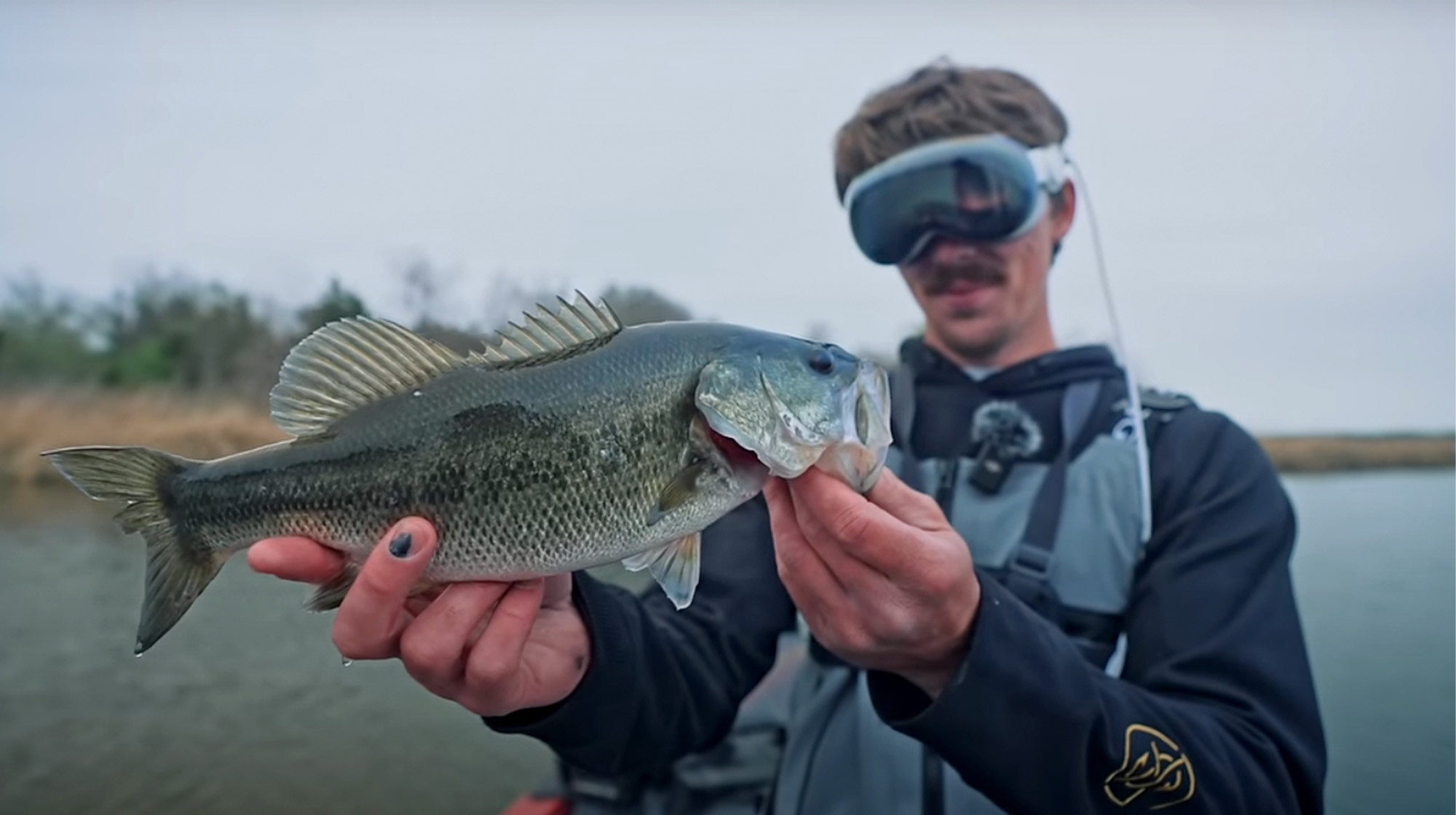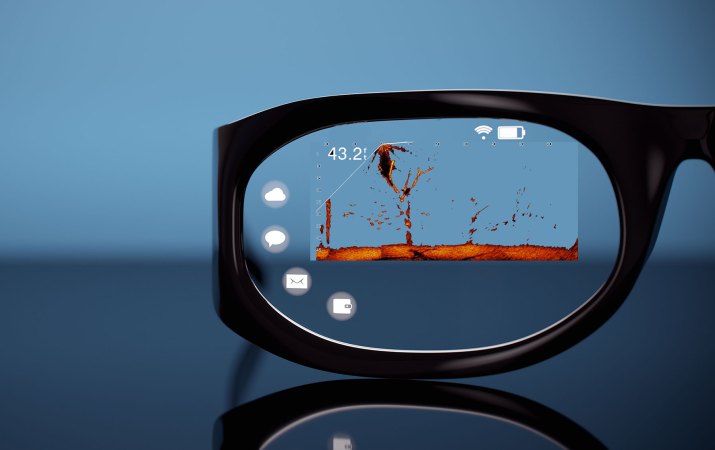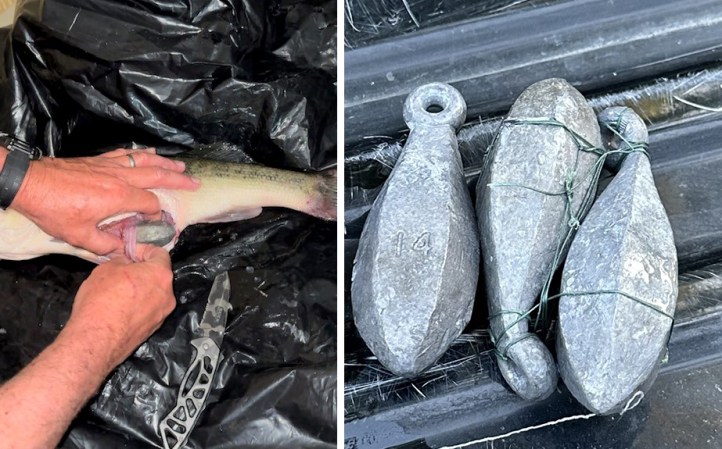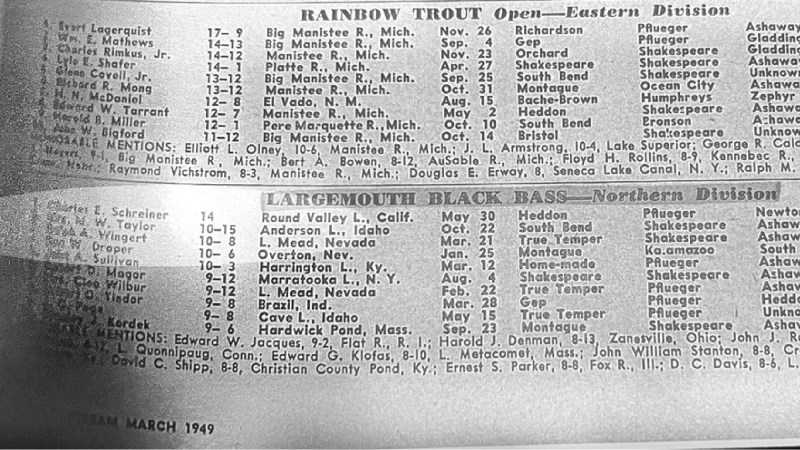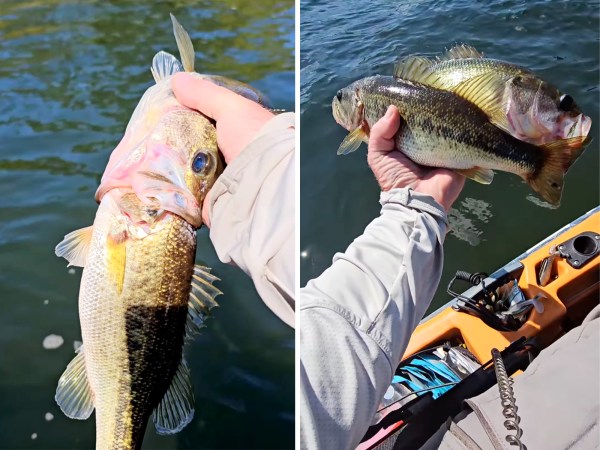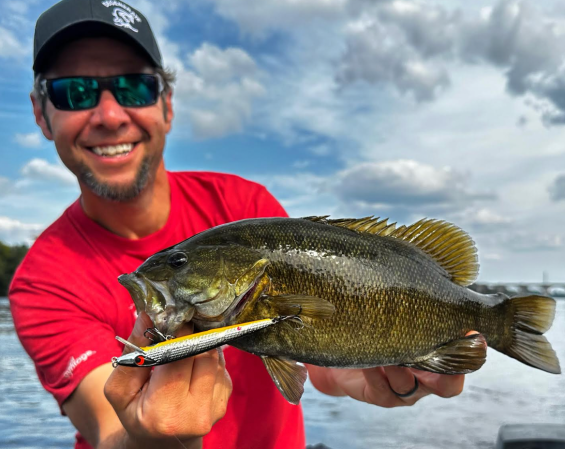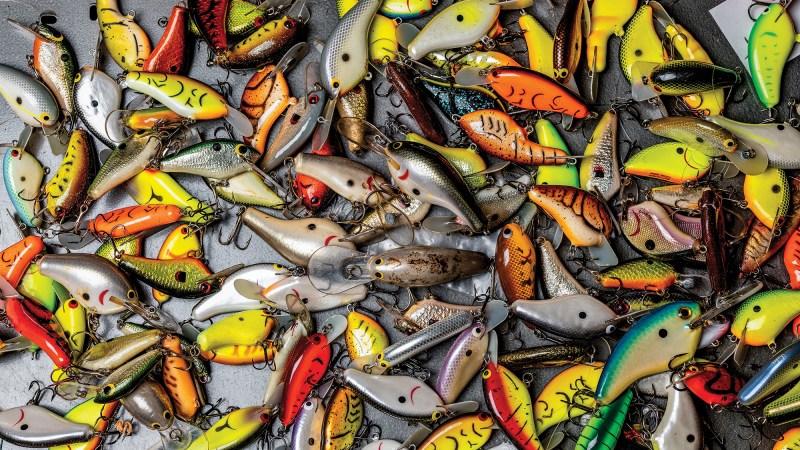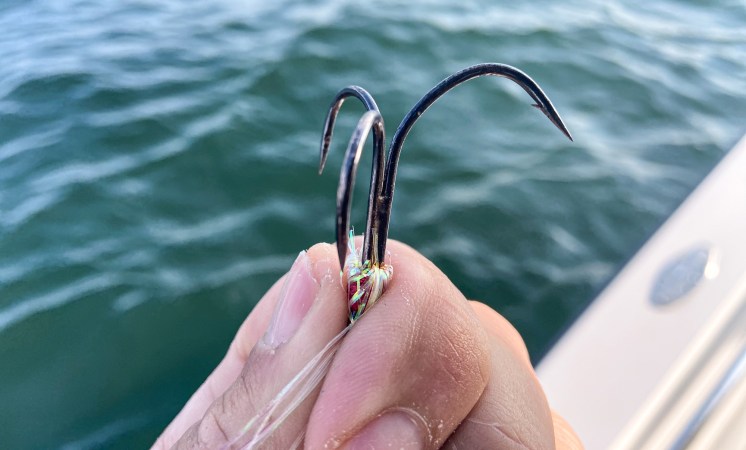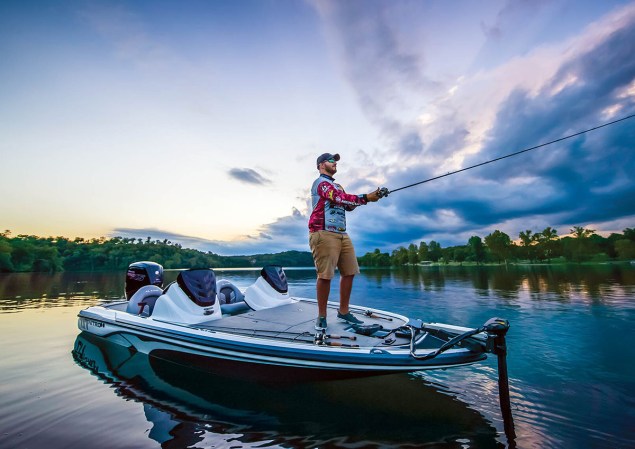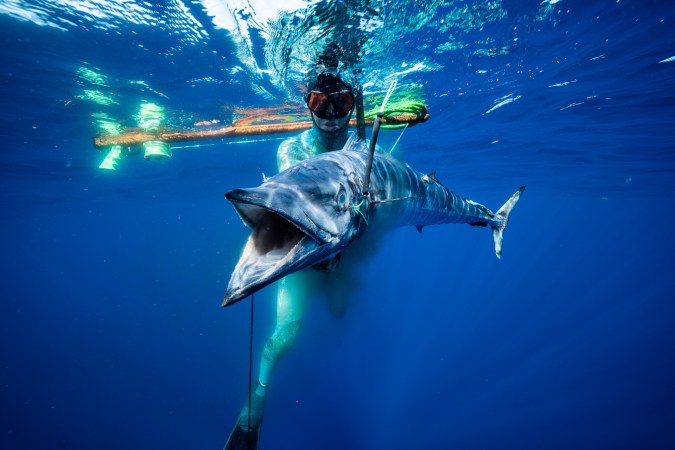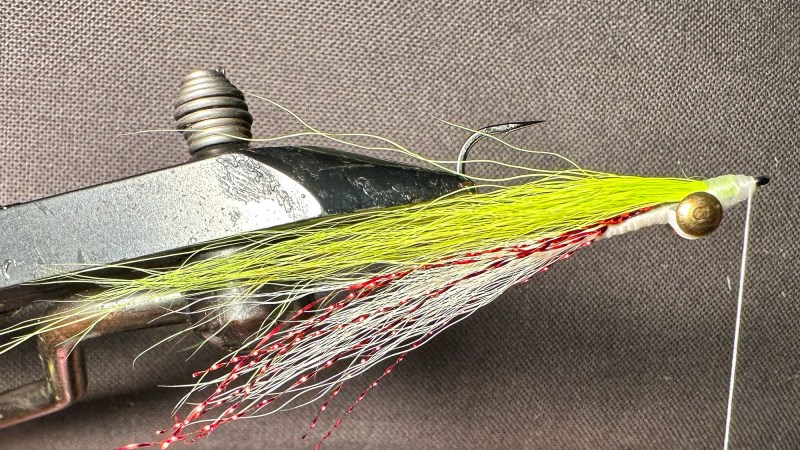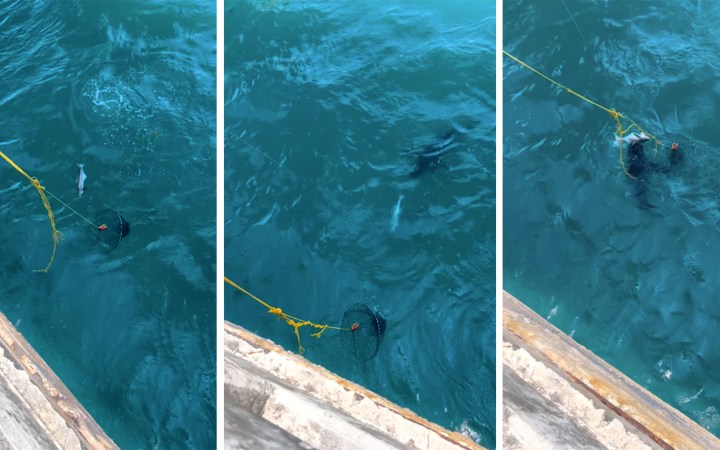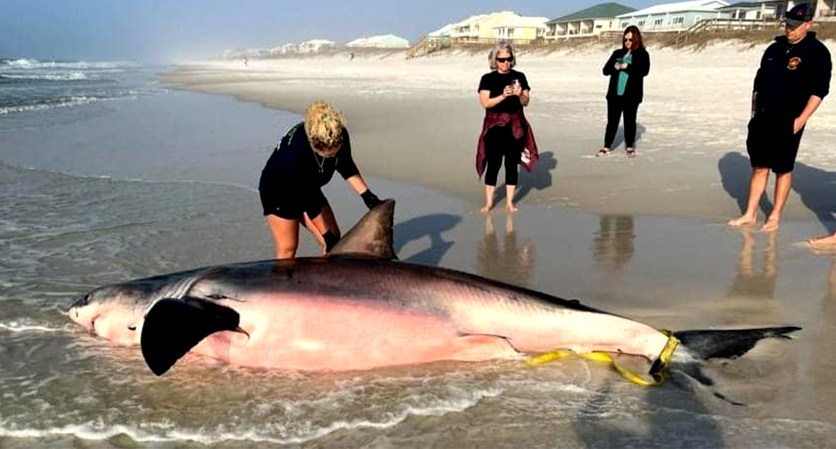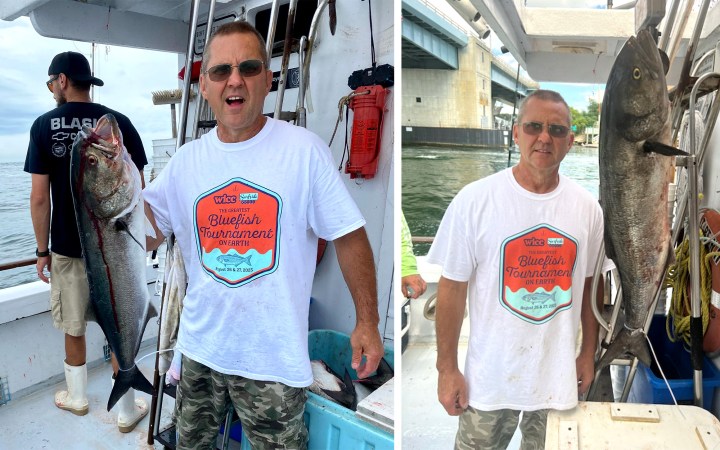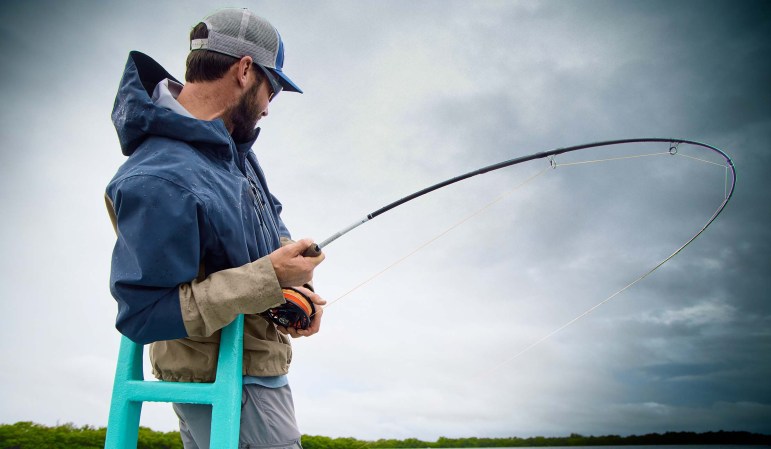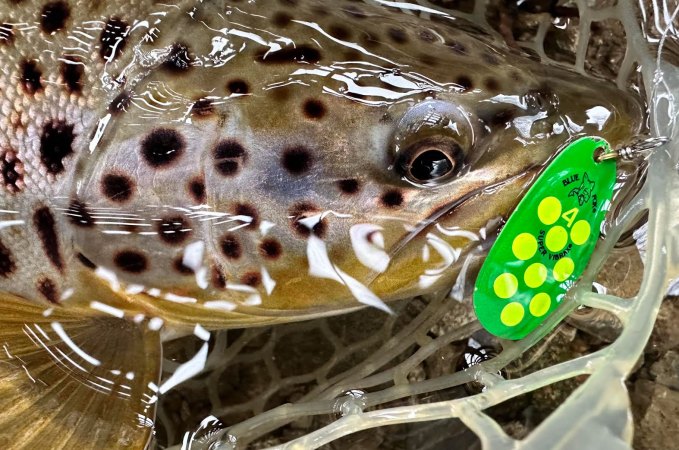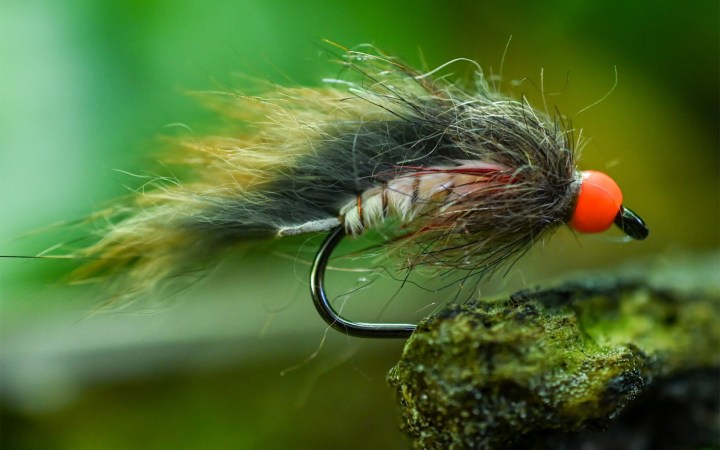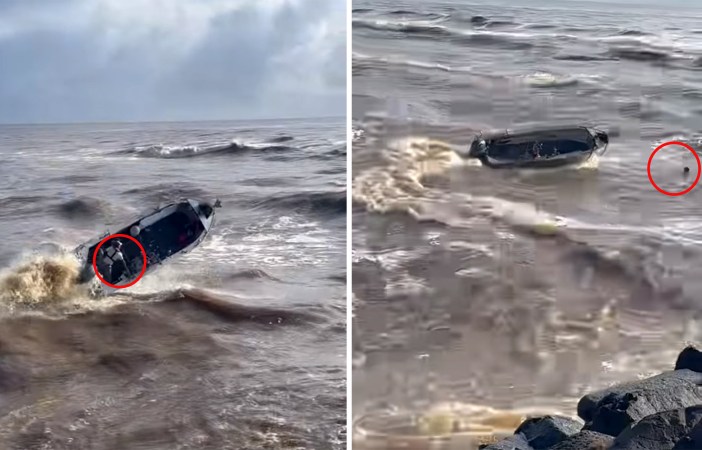“The future of fishing is here,” says YouTuber Jon Barzacchini (Jon B) in a video that was uploaded on Monday. Standing on the bow of his boat wearing a pair of Apple Vision Pro glasses, Barzacchini holds up a bass with one hand. He uses the other to pinch and swipe at the screen that’s being projected in front of his face. “And there’s nothing we can do about it.”

In the video, which has received more than 100,000 views in fewer than 24 hours, Barzacchini syncs the augmented-reality glasses with his LiveScope unit. The Apple headset, which looks like a bulky pair of ski goggles, is on the cutting-edge of wearable, immersive 3D technology. The goggles give users an interface that they can control with their eyes, hands, and voice, allowing them to use apps, watch movies, take pictures, and interact with other digital content while still being able to see and experience the “real world” around them. The tech is especially interesting when paired with forward-facing sonar because it allows the angler to target fish (and see their bait) without having to look down at a screen. Theoretically, it would also project the FFS view to be much larger.
“That was insane! I’m so geeked, man. As frickin’ [dystopian] as this video may seem, you can’t deny that that is absurd,” Barzacchini says. “I have a screen that, in real life, is probably 200 inches wide, just here [in front of my face], for fishing purposes.”
For reference, a typical FFS screen is 12 inches, with the newest, largest screens running 20 inches.
Understanding Apple Vision Pro
Because the real world that wearers experience is actually a projection, some tech experts have questioned whether the headset should be classified as virtual-reality and not an augmented-reality tool — the difference being that virtual-reality goggles take over a user’s vision, while augmented-reality goggles add digital elements to a user’s vision. Apple avoided both terms when it released the product in February, instead billing the goggles as “a revolutionary spatial computer that seamlessly blends digital content with the physical world.” Now, we can filter the world through our smartphone screens without ever having to pull them out of our pockets.
But how does the Apple Vision Pro headset (which retails for $3,499) work in a fishing context? And is there a place for the tech in today’s modern angling world? These are the questions Barzacchini set out to answer by taking the goggles out for a day of bass fishing in central Texas.
Synching Apple Vision Pro with LiveScope
Barzacchini explains at the start of the video that he got the idea from a recent Outdoor Life article profiling a Bassmaster pro who linked his forward-facing sonar to a pair of augmented-reality glasses. It took some serious trial and error, the pro told OL, but he now plans to use them in tournament settings.
Read Next: A Bassmaster Pro Is Using Augmented Reality Glasses for LiveScoping
Barzacchini’s YouTube experiment took place on a pair of well-known lakes in the Austin area. In the video, he uses the goggles to communicate with Siri and get driving directions to the first lake. He watches a couple Family Guy videos while backing his boat down the ramp, and then pulls up his Navionics GPS app as he runs across the lake. While catching bass along a grassy shoreline, he occasionally scrolls through pictures and glances at his script in a Word document. At one point, he snaps a picture of a fish he caught without ever taking off the goggles.
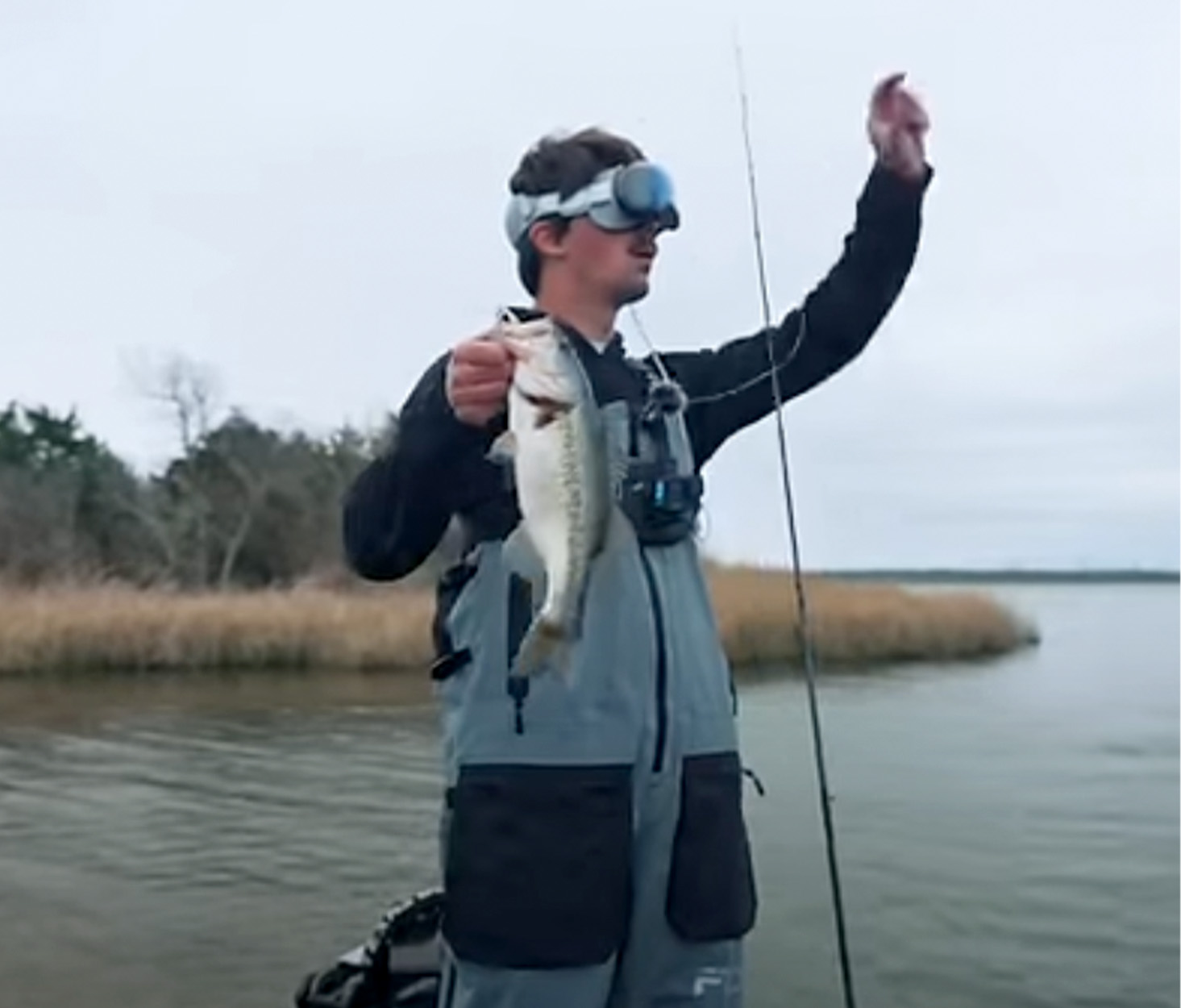
Photograph by Caleb Tacia / via YouTube
The most interesting part of the experiment, however, is Barzacchini syncing the Vision Pros to his Garmin LiveScope forward-facing sonar unit. This turns out to be difficult, and he keeps getting frustrated as the goggles keep dropping the FFS graph and showing an error message.
“For whatever reason, this Apple Vision Pro gets very tweaky whenever I’m moving,” Barzacchini says. “I can tell you right now these glasses are not meant for an angler that likes to move around and fish.”
Roughly halfway through the experiment, Barzacchini moves to a second lake in downtown Austin, where he “plugs himself back [into] the Matrix” and dials in the goggles a bit more. He eventually figures out how to keep them connected to his LiveScope unit by staying very still, and he finds a pile of bass holding underneath a railroad bridge.
“There goes my bait,” says Barzacchini while he looks through his goggles and watches his finesse bait drop down to where the fish are. “He sees it! He sees it … Oh my gosh, this could happen, folks … Got him! No way. No way. We did it.”
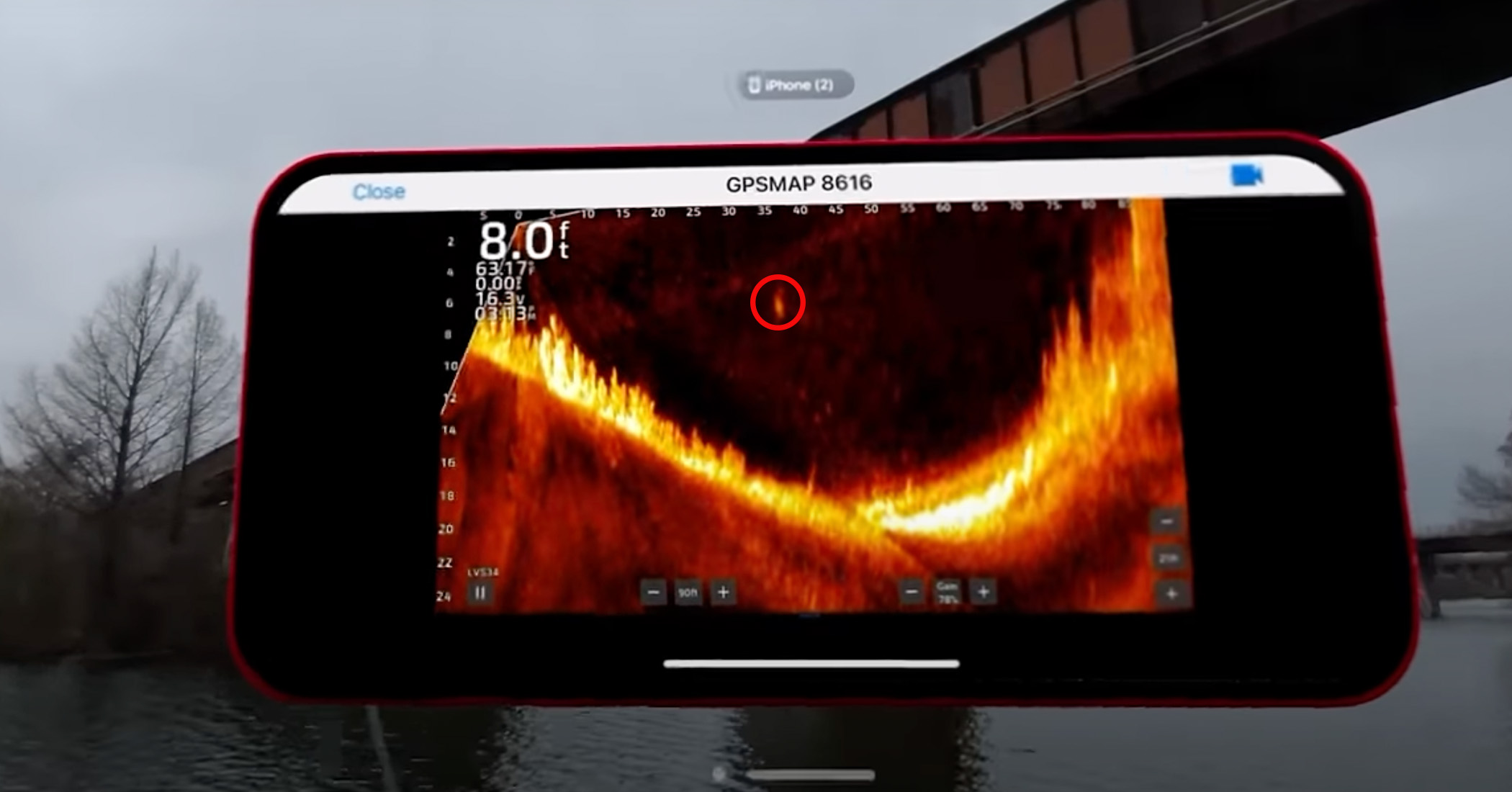
Photograph by Caleb Tacia / via YouTube
Barzacchini ends up breaking the fish off, but after achieving his goal of watching a fish eat his bait in real-time through augmented-reality glasses, he’s so overjoyed he can hardly keep it together.
He keeps fishing into the evening, constantly checking his three-dimensional screen in the sky and rarely looking in the direction of the water he’s fishing. Overall, Barzacchini seems genuinely impressed with the technology and what it could do in the hands of the right angler. But that doesn’t mean he kept the glasses.
Drawing the Line on Tech
Barzacchini’s video ends with an honest recap where he shares his opinions and explains why he doesn’t think there’s a place for the tech in the fishing world. He says that while he was intrigued by the tech’s potential, he decided to return the Apple Vision Pros and get his money back.
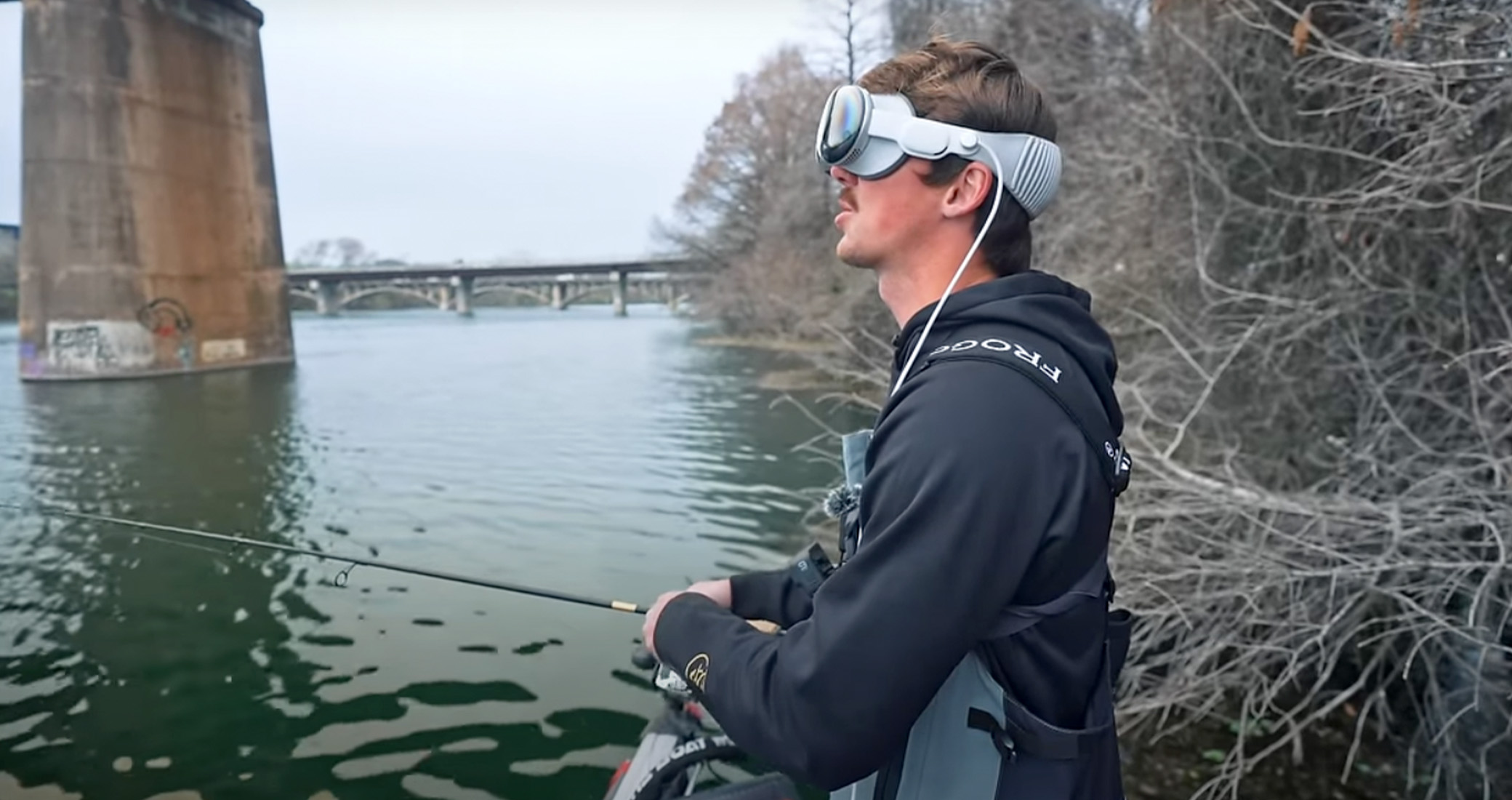
Photograph by Caleb Tacia / via YouTube
“I think over the past couple years people have really forgotten what fishing is all about and why we do it, myself included,” Barzacchini says. “I’ll admit it’s hard not to use these tools if we can afford them and if they’re available to us. But ultimately, at the end of the day, [we] have to ask [ourselves] why do we do what we do.”
His testimony speaks to the larger debate around forward-facing sonar that’s currently dominating the fishing world — and particularly the pro bass fishing scene. Many anglers have embraced the tech with open arms and used it to catch huge bags and win tournaments. Others have shunned FFS, equating it to a video game that gives anglers an unfair advantage by taking away some of the mystery inherent to the sport.
Read Next: The Unwinnable Battle Over Forward-Facing Sonar
Combining virtual- or augmented-reality glasses with FFS signals a new phase in the ongoing debate. Staring down at a screen while fishing is one thing, but experiencing the sport through a screen is something else entirely. And it’s a threshold that many of us are unwilling to cross — at least for now.

